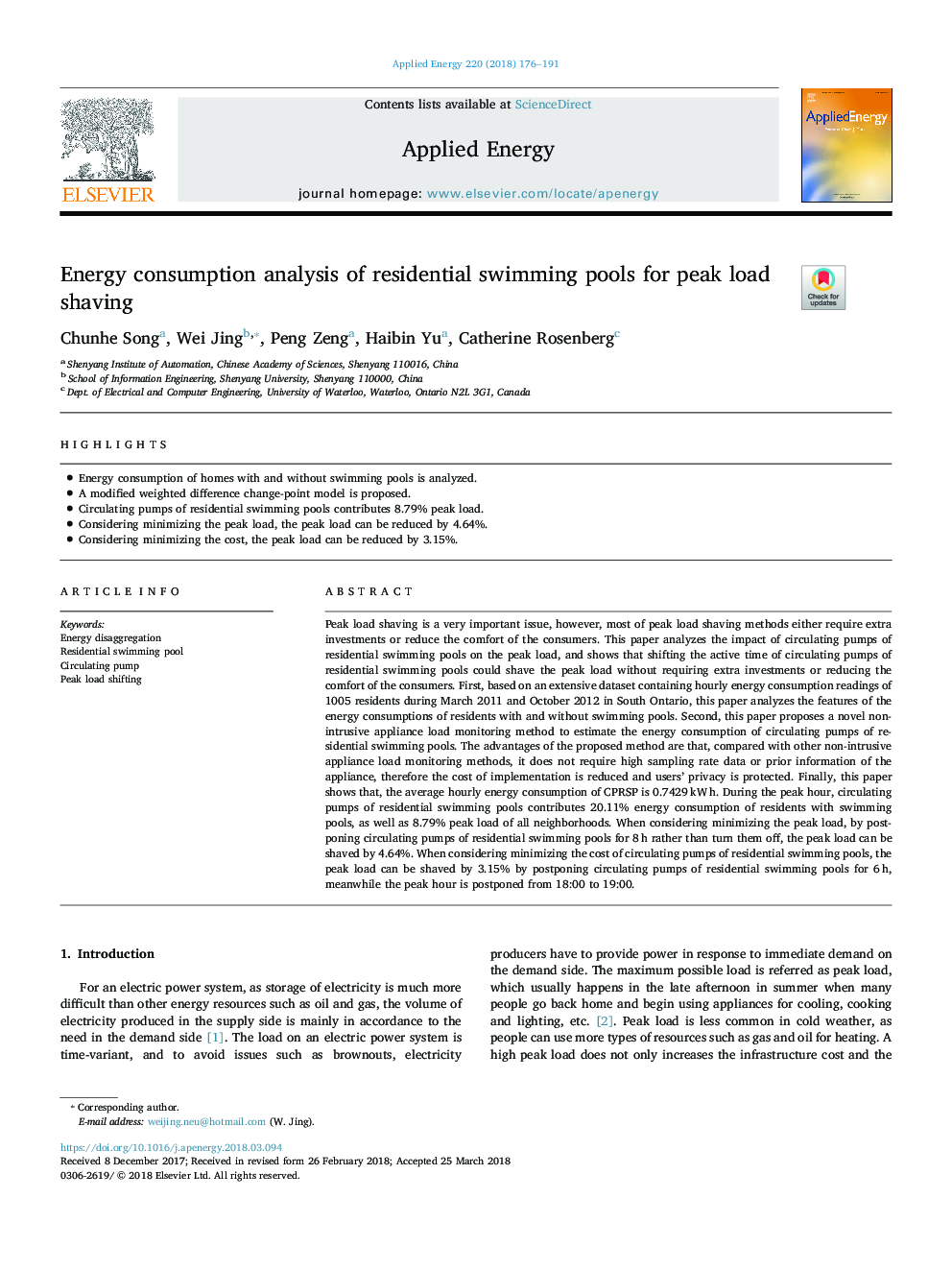| Article ID | Journal | Published Year | Pages | File Type |
|---|---|---|---|---|
| 6680245 | Applied Energy | 2018 | 16 Pages |
Abstract
Peak load shaving is a very important issue, however, most of peak load shaving methods either require extra investments or reduce the comfort of the consumers. This paper analyzes the impact of circulating pumps of residential swimming pools on the peak load, and shows that shifting the active time of circulating pumps of residential swimming pools could shave the peak load without requiring extra investments or reducing the comfort of the consumers. First, based on an extensive dataset containing hourly energy consumption readings of 1005 residents during March 2011 and October 2012 in South Ontario, this paper analyzes the features of the energy consumptions of residents with and without swimming pools. Second, this paper proposes a novel non-intrusive appliance load monitoring method to estimate the energy consumption of circulating pumps of residential swimming pools. The advantages of the proposed method are that, compared with other non-intrusive appliance load monitoring methods, it does not require high sampling rate data or prior information of the appliance, therefore the cost of implementation is reduced and users' privacy is protected. Finally, this paper shows that, the average hourly energy consumption of CPRSP is 0.7429â¯kWâ¯h. During the peak hour, circulating pumps of residential swimming pools contributes 20.11% energy consumption of residents with swimming pools, as well as 8.79% peak load of all neighborhoods. When considering minimizing the peak load, by postponing circulating pumps of residential swimming pools for 8â¯h rather than turn them off, the peak load can be shaved by 4.64%. When considering minimizing the cost of circulating pumps of residential swimming pools, the peak load can be shaved by 3.15% by postponing circulating pumps of residential swimming pools for 6â¯h, meanwhile the peak hour is postponed from 18:00 to 19:00.
Related Topics
Physical Sciences and Engineering
Energy
Energy Engineering and Power Technology
Authors
Chunhe Song, Wei Jing, Peng Zeng, Haibin Yu, Catherine Rosenberg,
